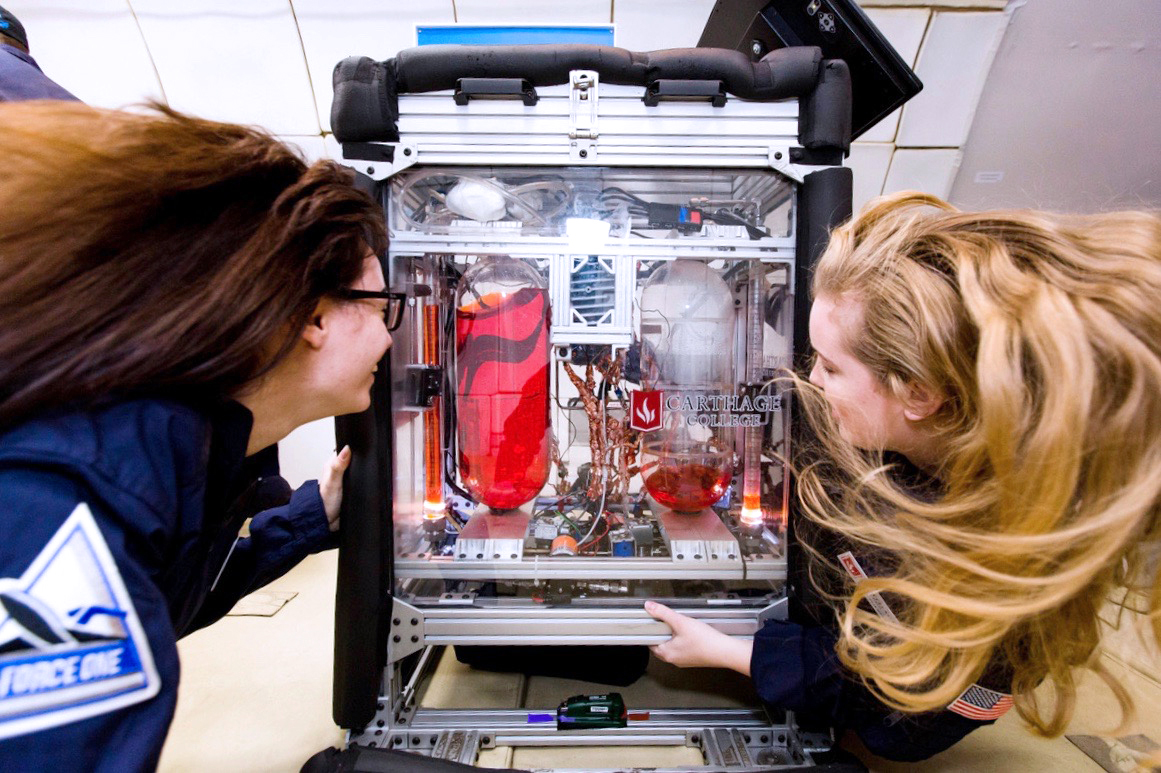NASA has selected 15 university-led proposals for the study of innovative, early stage technologies that address high priority needs of America’s space program. The proposals selected under the Early Stage Innovations 2015 solicitation address unique, disruptive or transformational technologies, including: payload technologies for assistive free-flyers; robotic mobility technologies for the surfaces of icy moons; integrated photonics for space optical communication; computationally guided structural nanomaterials design; and atmospheric entry modeling development using flight data from the Orion’s first flight test in space last December called Exploration Flight Test 1 (EFT-1).
View the NASA Press Release
The 15 universities selected for Early Stage Innovation (ESI) grants and the titles of their proposals are:
Payload Technologies for Assistive Free-Flyers
- Matei Ciocarlie
Columbia University
Versatile Manipulation for Assistive Free-Flyers - Mark Cutkosky
Stanford University
Assistive Free-Flyers with Gecko-Inspired Adhesive Appendages for Automated Logistics in Space - Christine Hartzell
University of Maryland
Design, Test and Control of a Magnetorheological Universal Gripper for Use On-Orbit - Matthew Spenko
Illinois Institute of Technology
A Novel Electrostatic/Microstructured Adhesive with Dust Mitigation Capabilities
Robotic Mobility Technologies for the Surfaces of Icy Moons
- Nathan Michael
Carnegie Mellon University
Autonomous Navigation for Exploration on Icy Moons - Raymond Sedwick
University of Maryland
Icy-Moon Cryo-Environment Penetrating Ice Claw (ICE-PIC)
Integrated Photonics for Space Optical Communication
- Keren Bergman
Columbia University
Ultra-Low Power CMOS-compatible Integrated Photonic Platform for Terabit-Scale Communications - Seng-Tiong Ho
Northwestern University
Compact Robust Integrated PPM Laser Transceiver Chip Set with High Sensitivity, Efficiency, and Re-Configurability - Jonathan Klamkin
University of California, Santa Barbara
PICULS: Photonic Integrated Circuits for Ultra-Low Size, Weight and Power - Paul Leisher
Rose-Hulman Institute of Technology
Integrated tapered active modulators for high efficiency Gbps PPM laser transmitter PICs - Shayan Mookherjea
University of California, San Diego
Integrated Photonics for Adaptive Discrete Multi-carrier Space-based Optical Communication and Ranging
Computationally Guided Structural Nanomaterials Design
- Traian Dumitrica
University of Minnesota
Mesoscopic distinct element method-enabled multiscale computational design of carbon nanotube-based composite materials - Leonid Zhigilei
University of Virginia
Computational design of carbon nanotube network materials and polymer matrix nanocomposites
Atmospheric Entry Modeling Development Using Orion EFT-1 Flight Data
- Deborah Levin
University of Illinois, Urbana-Champaign
Investigating the Thermochemical Response of Avcoat TPS from First Principles for Comparison with EFT-1 Data - Alexandre Martin
University of Kentucky
Material response reconstruction of ablative TPS using accurate boundary layer modeling





























